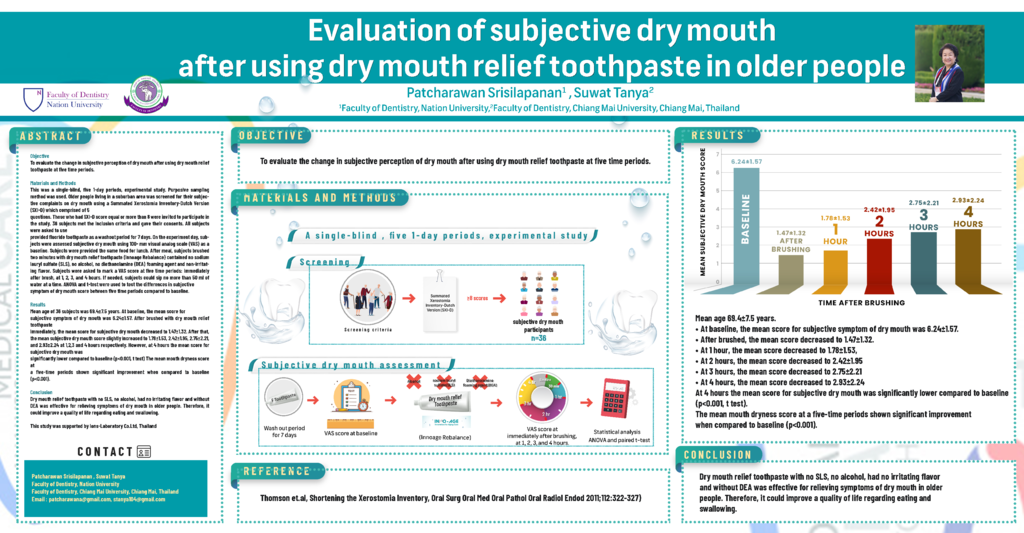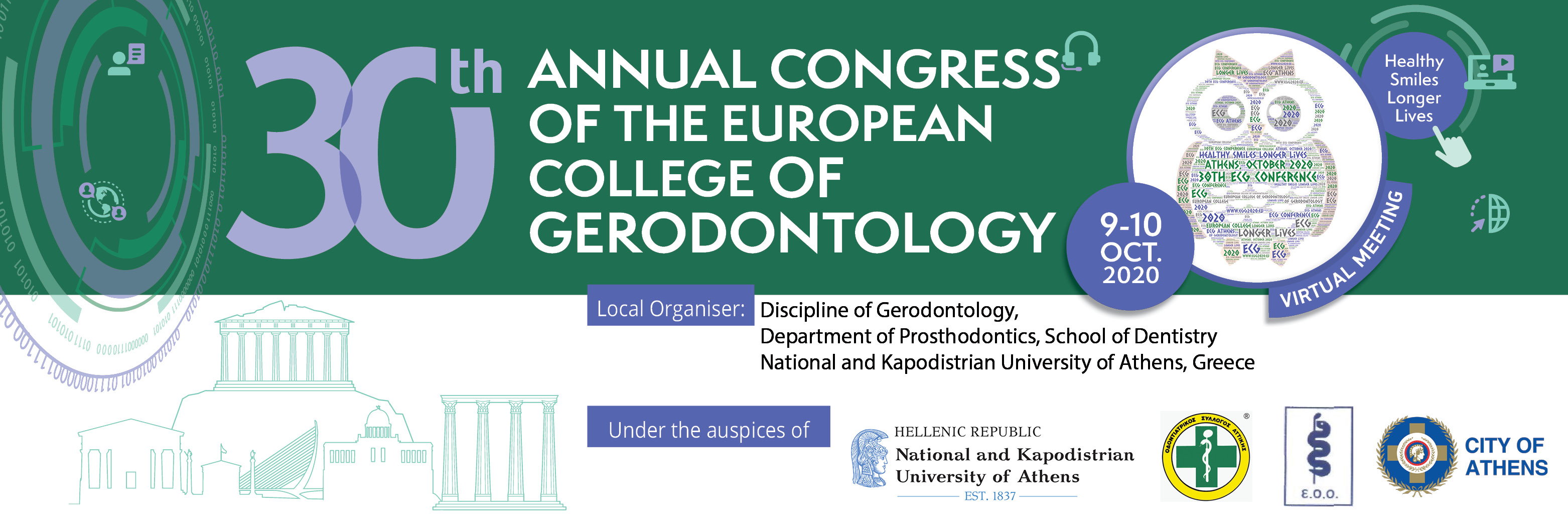Objective: To evaluate the change in subjective perception of dry mouth after using dry mouth relief toothpaste at five time periods. Materials and Methods: This was a single-blind, five 1-day periods, experimental study. Subjects were screened for their subjective complaints on dry mouth using a Summated Xerostomia Inventory-Dutch Version (SXI-D) comprised of 5 questions. Those who had SXI-D score equal or more than 8 were invited to participate. 36 subjects met the inclusion criteria and gave their consents. All subjects were asked to use provided fluoride toothpaste as a washout period for 7 days. On the experiment day, subjects were assessed subjective dry mouth using 10-cm visual analog scale (VAS) as a baseline. Subjects were provided the same food for lunch. After meal, subjects brushed two minutes with dry mouth relief toothpaste (Innoage Rebalance) contained no sodium lauryl sulfate (SLS), no alcohol, no diethanolamine (DEA) foaming agent and non-irritating flavor. Subjects were asked to mark a VAS score at five time periods: immediately after brush, at 1, 2, 3, and 4 hours. If needed, subjects could sip no more than 50 ml of water at a time. ANOVA and t-test were used to test the differences in subjective symptom of dry mouth score between five time periods compared to baseline. Results: Mean age of 36 subjects was 69.4±7.5 years. At baseline, the mean score for subjective symptom of dry mouth was 6.24±1.57. After brushed with dry mouth relief toothpaste immediately, the mean score for subjective dry mouth decreased to 1.47±1.32. After that, the mean subjective dry mouth score slightly increased to 1.78±1.53, 2.42±1.95, 2.75±2.21, and 2.93±2.24 at 1,2,3 and 4 hours respectively. However, at 4 hours the mean score for subjective dry mouth was significantly lower compared to baseline (p<0.001, t test) The mean mouth dryness score at a five-time periods shown significant improvement when compared to baseline (p<0.001). Conclusion: Dry mouth relief toothpaste with no SLS, no alcohol, had no irritating flavor and without DEA was effective for relieving symptoms of dry mouth in older people. Therefore, it could improve a quality of life regarding eating and swallowing.
- 66 views



